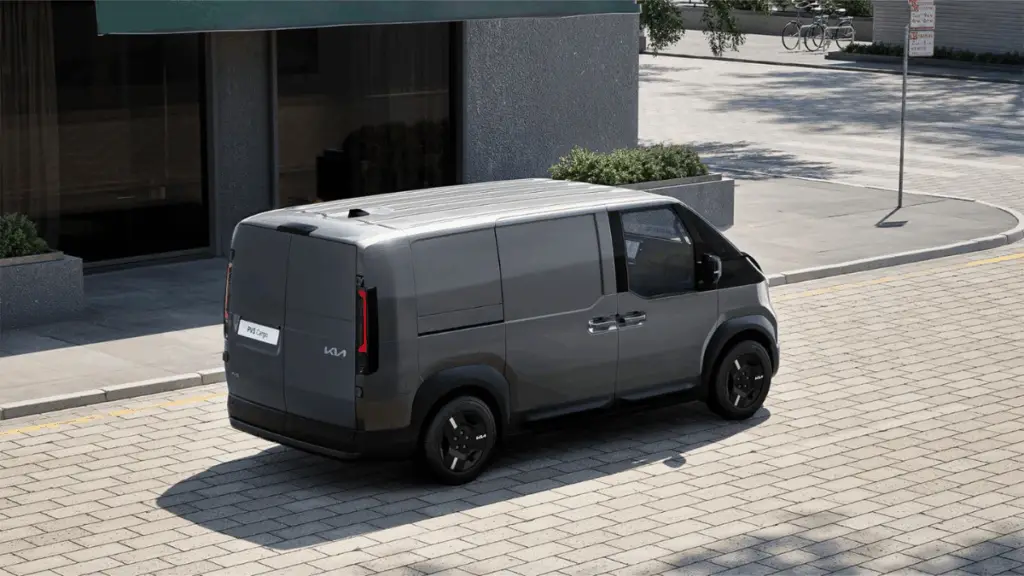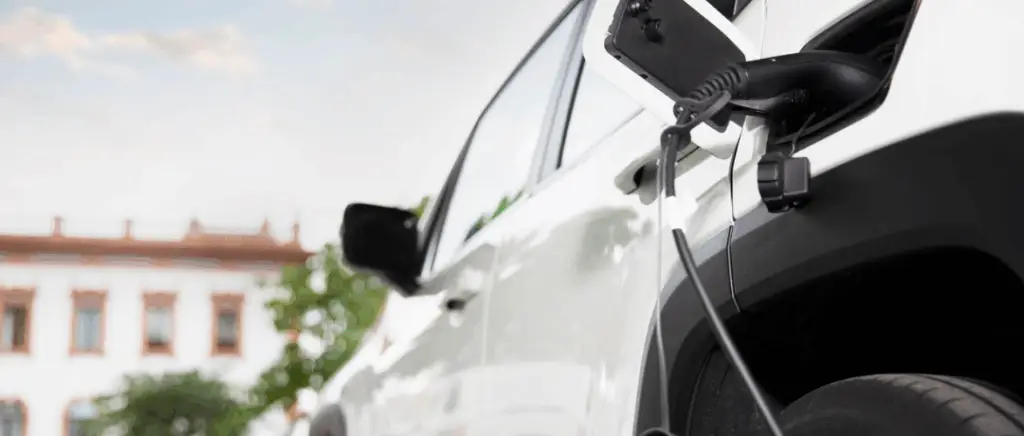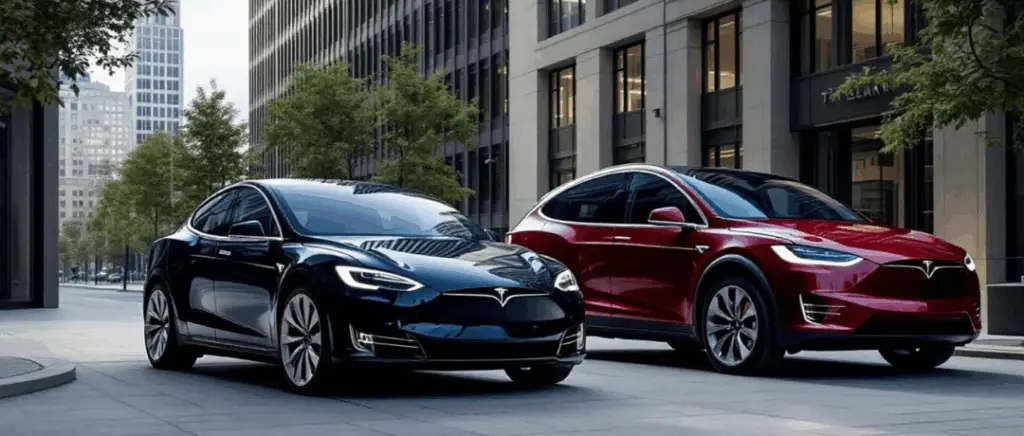Compare these two electric cars
With our tool electric vehicle comparator you can compare the :
Monday to Friday
9am - 12.30pm - 2pm - 7pm
Kia EV6 and Hyundai Ioniq 5: identical twins?
Despite their radically different conceptions, the Electric SUVs Hyundai and Kia share major components, but have minor distinctions. So what distinguishes the two Korean models from each other?
Atypical designs in their own way
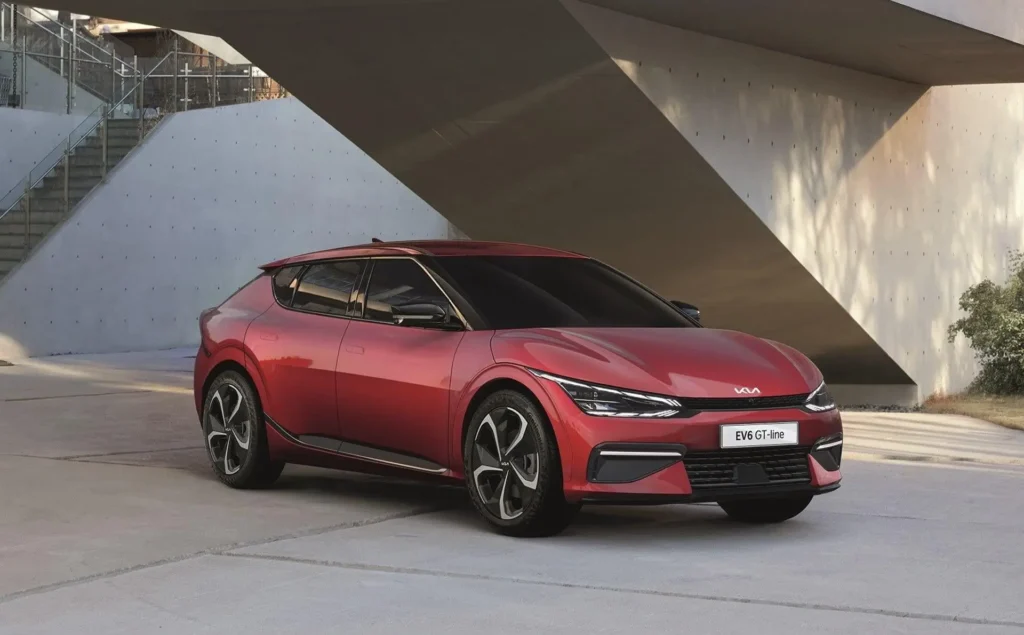
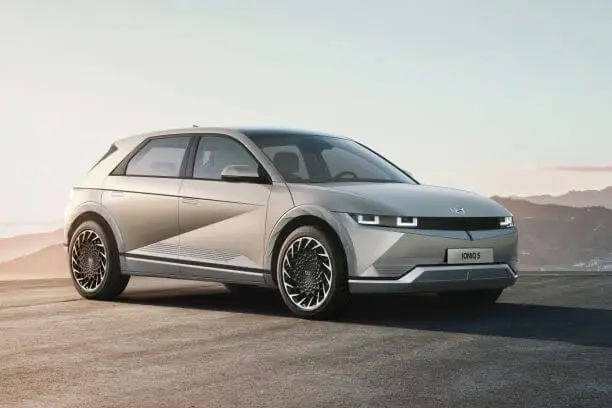
Proportionally, the Kia EV6 and Hyundai Ioniq 5 are almost identical, but their design strategies vary considerably. Hyundai gives the Ioniq 5 a distinctive retro hatchback feel vintage style, a trend that is becoming increasingly popular. This practice is becoming increasingly popular both inside and outside the electric car sector. The same atmosphere can be found in "80's with 8-bit pixel lights and avant-garde panels. But will the Ioniq 5's design age gracefully? That's a good question!
Kia, for its part, has decided to associate the EV6 with visual agility, with a curvaceous body and contemporary lighting signatures. The two electric cars' aesthetics are very much to the fore, and the effort that has been made in this area by both manufacturers is clearly evident. The design of the two electric vehicles is sure to suit everyone's tastes and colours.
The Hyundai makes better use of space thanks to its squarer shape and offers more passenger and load space. It also drives more smoothly and filters out road imperfections more effectively than the Kia, which is more likely to drive quite abruptly and is likely to make its occupants feel the bumps and potholes.
Both very stylish, the Hyundai Ioniq 5 and the Kia EV6 have a very modern and futuristic design, but each in its own way. While the Ioniq 5 impresses with its bodywork prominent and strictthe EV6 is slightly more curved and offers an elegant rear coupé.
Close in size, but a game-changer
The Hyundai Ioniq 5 is a SUV electric It is true, however, that its dimensions can be confusing, making it appear smaller than it actually is. With a length of 4.64 metresa width of 1.89 metres and a height of 1.61 metresIt is close to the average exterior dimensions of an SUV, but has a more compact design. 16 centimetres less ground clearance.
For its part, the Kia EV6 is also a raised car like its competitor. It measures 4.68 metres long, 1.88 metres wide and 1.55 metres high. At first glance, its dimensions are very similar to those of the Ioniq 5. But the difference is in the ground clearance, much smaller than its rival (160 mm against 170 mm for the Ioniq 5). This detail, which at first glance may seem insignificant, is particularly important in view of its size, the Kia EV6 cannot be considered an SUV .
Find out more in the Kia EV 6 video test:
A functional and spacious cabin
Inside, the Hyundai Ioniq 5 features airy styling to match its original exterior. The front seats are available with heating and ventilationSoft-touch materials adorn most surfaces and a sliding centre console expands storage options. The interior of the EV6, with its sporty, elegant ambience, will seem more familiar to new electric vehicle owners, who may not yet be used to the rather futuristic design of today's clean-energy vehicles.
The front seats are also available with heating and ventilation, but are flanked by a fixed centre console clad in hard plastics - materials that are notoriously poor quality, especially for a car interior.
Looking at the exterior dimensions, there is no doubt that the interior dimensions of both vehicles will delight passengers and even families. But what about the equipment on board? Are they up to the demands of the occupants?

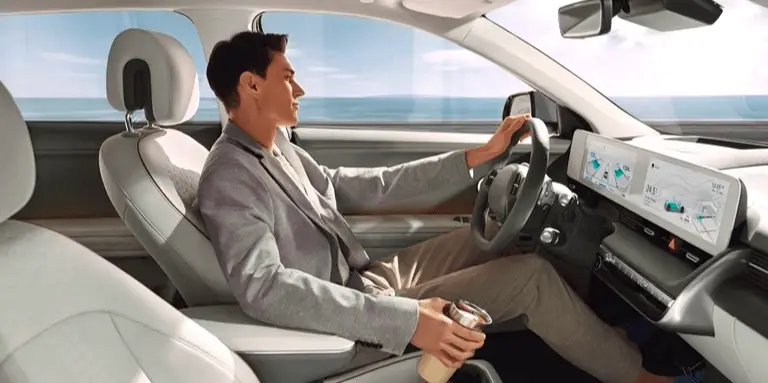
| Kia EV 6 | Hyundai Ioniq 5 |
|---|---|
|
2 x 12-inch screens (one for multimedia and the other for the car's other functions)
|
Full LED lighting with distinctive signature
|
|
Flush door handles
|
Flush door handles
|
|
21-inch wheels
|
20-inch wheels
|
|
Remote parking function
|
Sliding centre console
|
|
LED headlights
|
Multi-configurable front seats
|
|
Semi-automatic motorway driver
|
Movable rear bench seat
|
|
Head-up display with augmented reality
|
12-inch screen
|
|
Charge control battery integrated (for charging other devices)
|
SmartSense driver assistant
|
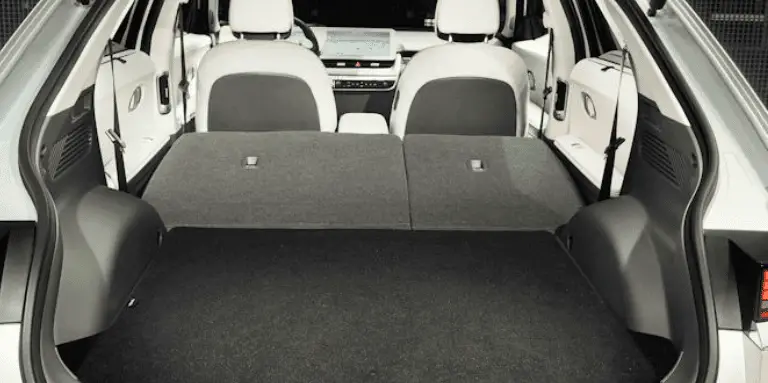
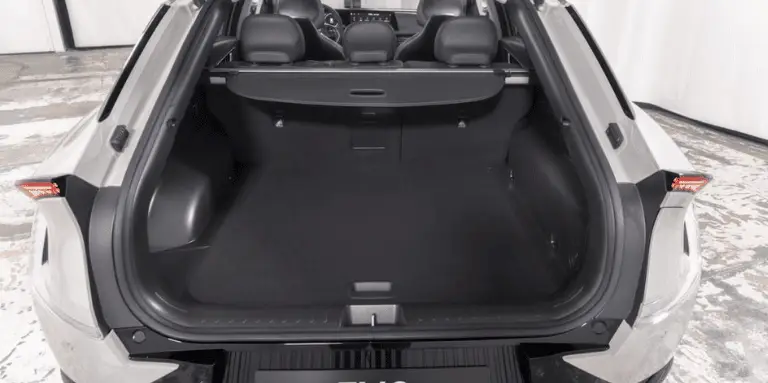
Often one of the most important considerations when buying an electric vehicle, and even more so for families, boot space is always an interesting parameter to study. Customers want to have enough space to store their shopping or even their holiday luggage, to make their journey as comfortable as possible. In terms of practicality, both models have two dedicated luggage compartments. The main compartment is traditionally located behind the second row of seats, while the secondary compartment, the boot, is in front of the driver's cab.
L'Hyundai Ioniq 5 brand here with 531 litres in the boot and 57 litres in the boot. If the rear seats are folded down, customers can store 1 587 litres in the rear luggage compartment. With the Kiathe minimum boot volume is 480 to 490 litres. The side compartment in front of the cab can accommodate up to 52 litres. If the rear seats are folded down, there is a 1,300 litres space at the rear.
Kia EV6 vs Hyundai Ioniq 5: technical specifications
| Kia EV6 GT Line | Hyundai Ioniq 5 Intuitive | |
|---|---|---|
|
Engine power
|
168 kW
|
168 kW
|
|
Number of horses
|
229 hp
|
229 hp
|
|
490 - 510 km
|
476 - 507 km
|
|
|
Battery power
|
77 kWh
|
77 kWh
|
|
AC load power wallbox
|
11 kW
|
11 kW
|
|
AC recharge time
|
6 h
|
6 h
|
|
DC fast charge power
|
250 kW
|
175 kW
|
|
Fast recharge time
|
18 min
|
17 min
|
|
0 to 100 km/h
|
7.3 sec
|
7.3 sec
|
|
Fuel consumption (WLTP)
|
18 kWh/100 km
|
17 kWh/100 km
|
|
Maximum speed
|
185 km/h
|
185 km/h
|
|
Rate
|
59 790 €
|
51 200 €
|
Performance: the two Koreas neck and neck
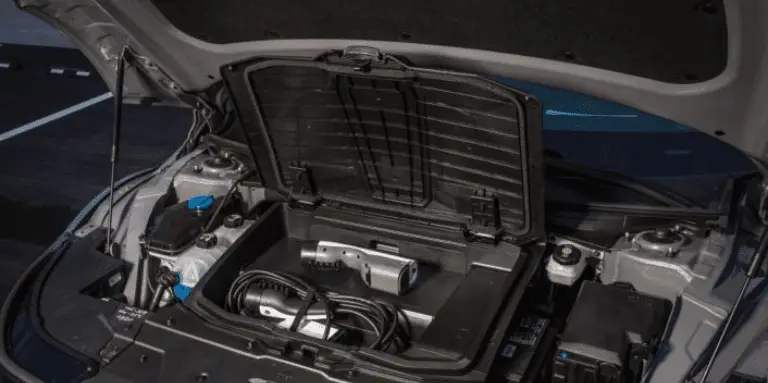
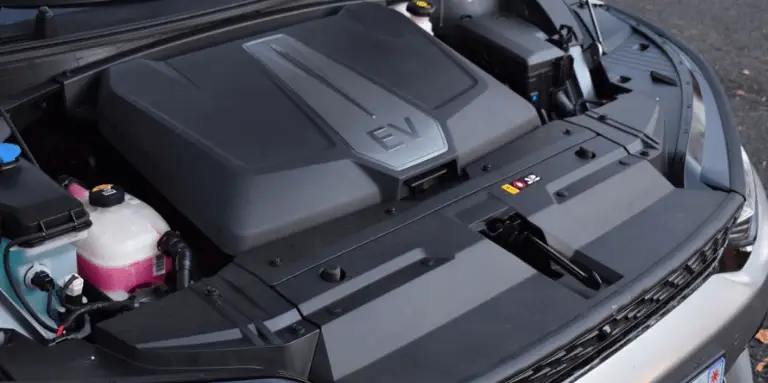
A glance at the engine performance of the two electric cars quickly reveals that the Kia EV6 is the fastest model. The top-of-the-range version of the Korean brand even offers an impressive sporty version of 325 hp named "GT-line.
Coming back to the engine, the rivals are sharing the load and offering their customers an entry-level engine. The Kia EV6 "Air Active is equipped with a 170 hp and a battery of 58 kWh, l'Hyundai Ioniq 5 "Intuitive" of a 229 hp and a battery of 77 kWh. This allows cars to accelerate from 0 to 100 km/h in 7.3 seconds and reach a top speed of 185 km/h. In terms of the Hyundaiis 384 kmfor Kia EV6, it offers an autonomy of 394 km.
For the most powerful models, the Hyundai Ioniq 5 Executive and Kia EV6 GT Line are equipped with a 325 hp running on a battery of 77 kWh. This enables the models to accelerate 0 to 100 km/h at 7.4 seconds or so. Maximum speed remains at 260 km/h for both. On a full charge, the Hyundai is capable of travelling up to 481 kmThe EV6, on the other hand, easily exceeds the 500 km (510).
At Hyundai, this engine is compatible with three different trim levels: Intuitive entry-level version, Creative and Executive for the top-of-the-range version . There are only two different trim levels available from the Korean manufacturer Kia : Air Active, Air Design and GT Line. In addition to rear-wheel drive, Hyundai and Kia also offer all-wheel drive variants. At Hyundai, customers can choose between 235 and 305 hp. The faster variant comes with acceleration that takes the car from 0 to 100 km/h at 5.2 secondswhile the slower version takes 6.1 seconds.
With both engines, top speed is limited to 185 km/h. Kia also offers two engines for all-wheel drive. These are connected to a raw battery of 77 kWh which can be charged to 350 kilowatts (DC) for the most powerful and rapid charging. If customers choose the 325 chthe acceleration of 0 to 100 km/h takes 5.2 seconds. Top speed is 185 km/h and a combined range of 450 km.
If you're a fan of speed, buy theEV6 in its version GT Line and its 325 hp and accelerates from 0 to 100 km/h in 5.2 seconds. In addition, the top speed of the models is 260 km/h. A full charge should last about 400 km. Forrecharging the Kia EV6 from a household socket, it may take longer than a few minutes. 30 hours to charge from 10 to 100 %. With alternating current on the wall box, the time is approximately six hours.
Kia EV6 vs Hyundai Ioniq 5: verdict and summary
| Kia EV6 | Hyundai Ioniq 5 |
|---|---|
|
+ Chic coupé look
|
+ Large boot, even with the rear seats up
|
|
+ Sport interior available
|
+ Spacious interior
|
|
+ Good range and recharging capacity
|
+ Very comfortable suspension
|
|
+ Large luggage space
|
+ High-quality infotainment system
|
|
+ Heated and cooled seats
|
+ Small additional 57-litre boot at the front in 4X2 mode
|
|
+ High-quality infotainment system
|
+ Good soundproofing
|
|
- No roof bars
|
- Large size for an electric city car
|
|
- Low-power stereo system
|
- An interesting and daring design, but not sure to age well over time
|
|
- Uncomfortable suspension
|
- Quality of materials not always perfect
|
For this comparison test, it's difficult to decide which crossover is the winner here. Basically, the models are very similar; the differences lie mainly in the point of view and what the customer expects from a crossover. electric car of this range. The Ioniq 5 with its raised body can still be counted among the SUVs, whereas the EV6 has no place here. It makes greater use of all-wheel drive for its power and a better driving experience in fast bends.
As they say, there's no accounting for taste. The electric car that's right for you depends above all on your personality, not that of others. If you're looking for a fast and lively, opt for a Kia EV6 instead, but if you're looking for a more compact car, the Electric SUV for everyday useThen the Hyundai Ioniq 5 is just what you're looking for.
In terms of price, the Ioniq 5 is probably the best choice. The clean-energy car comes with a lower entry price than its rival, which also facilitates its entry into the highly competitive world of electric cars. What about you? What do you think of the two cars, and which one would you choose? Tesla Model Y is a model that you feel is best suited to your needs?
We look forward to hearing from you!
Discover several models of electric vehicles that can be delivered quickly!






























